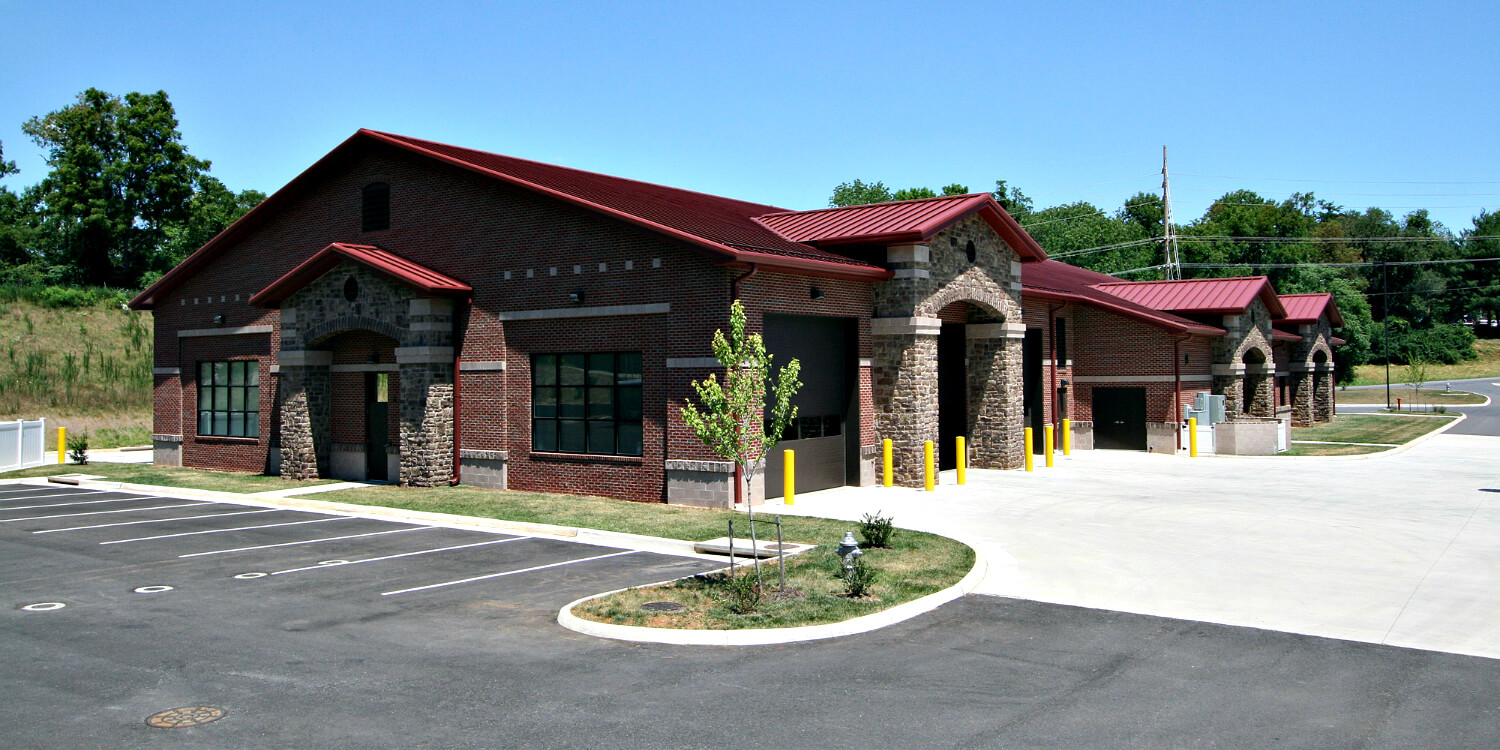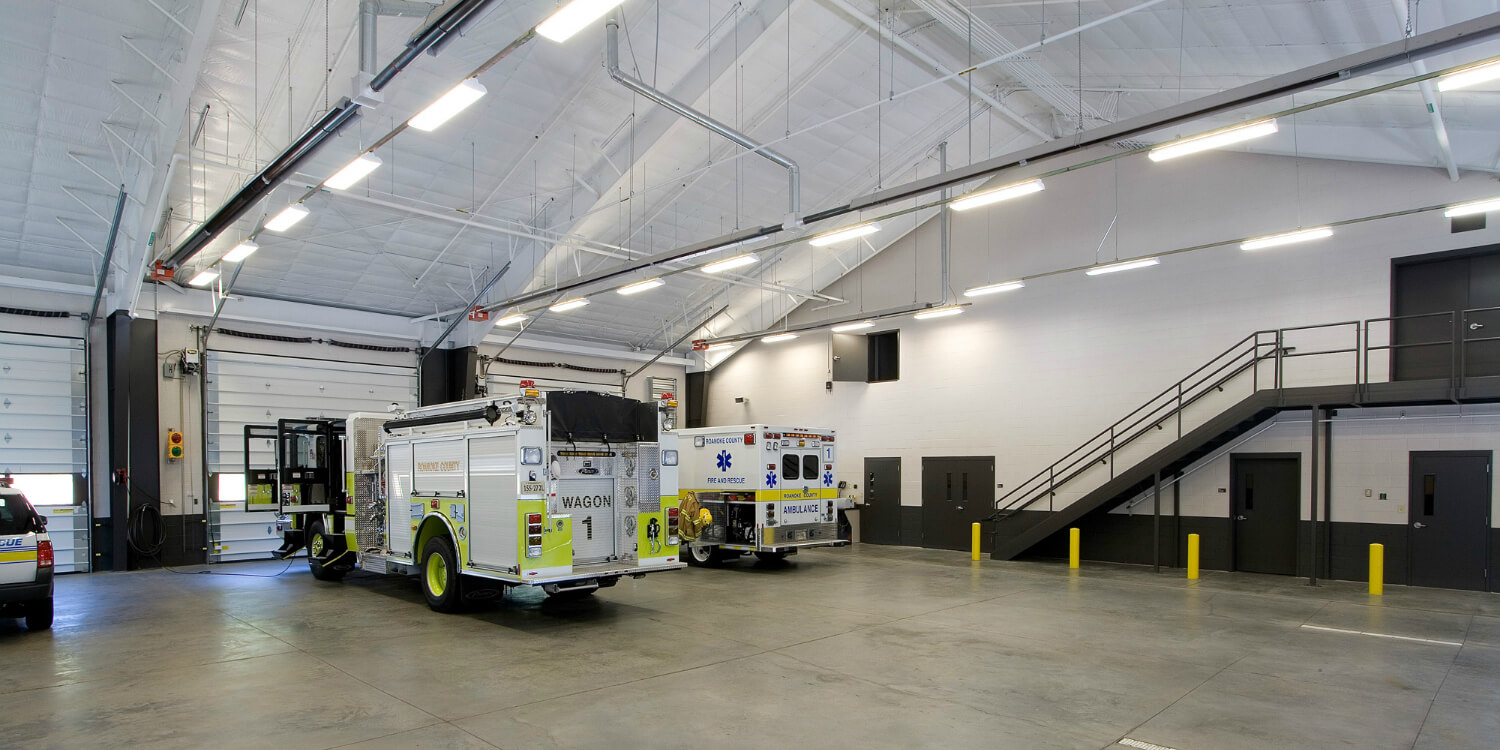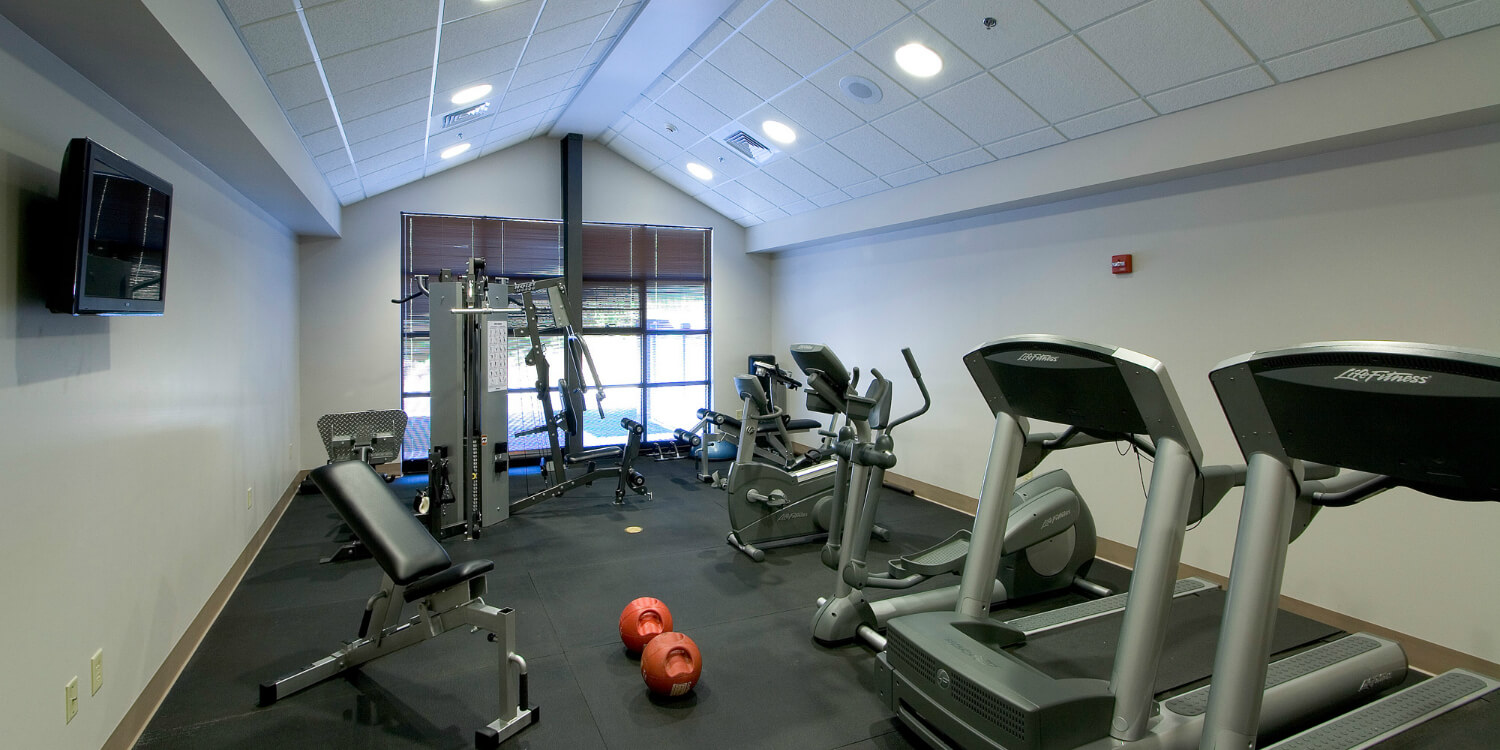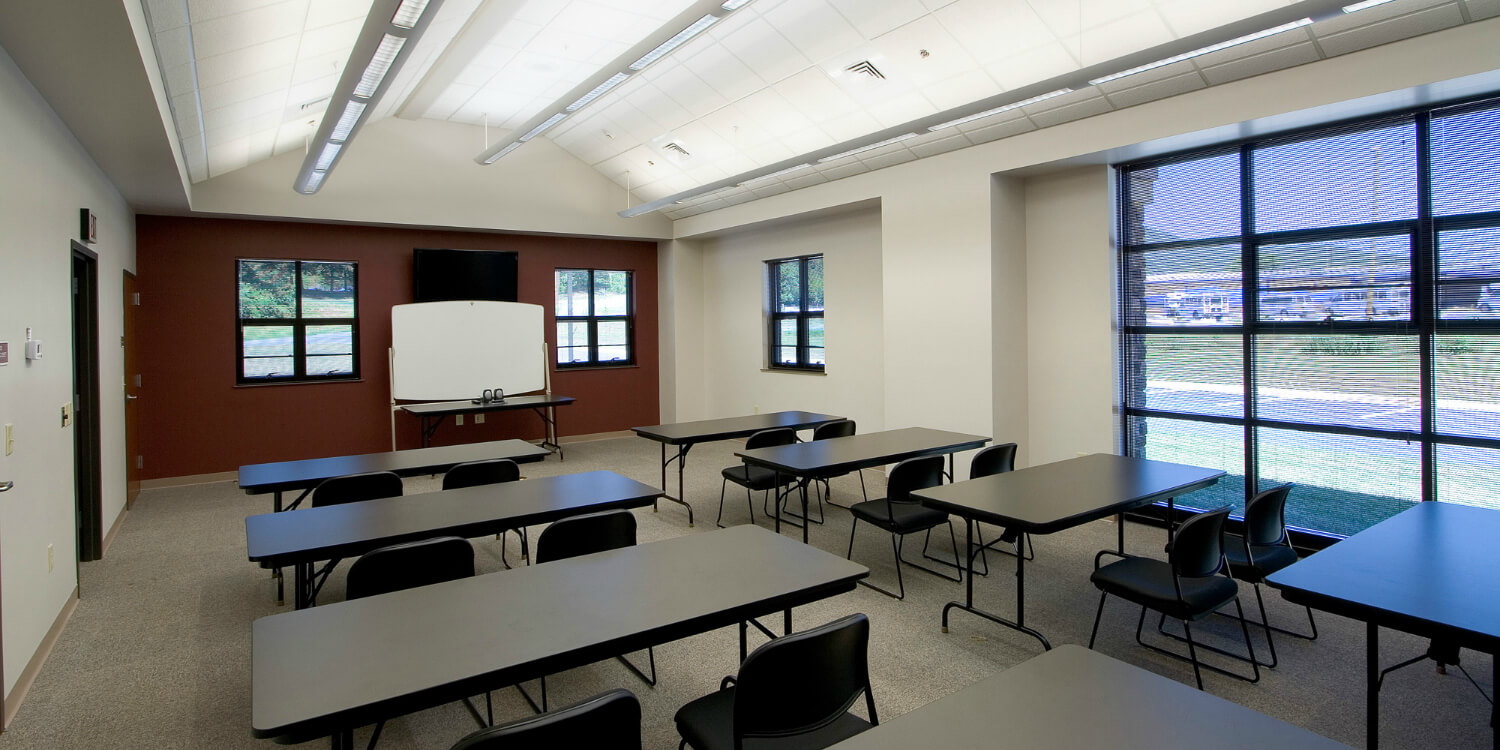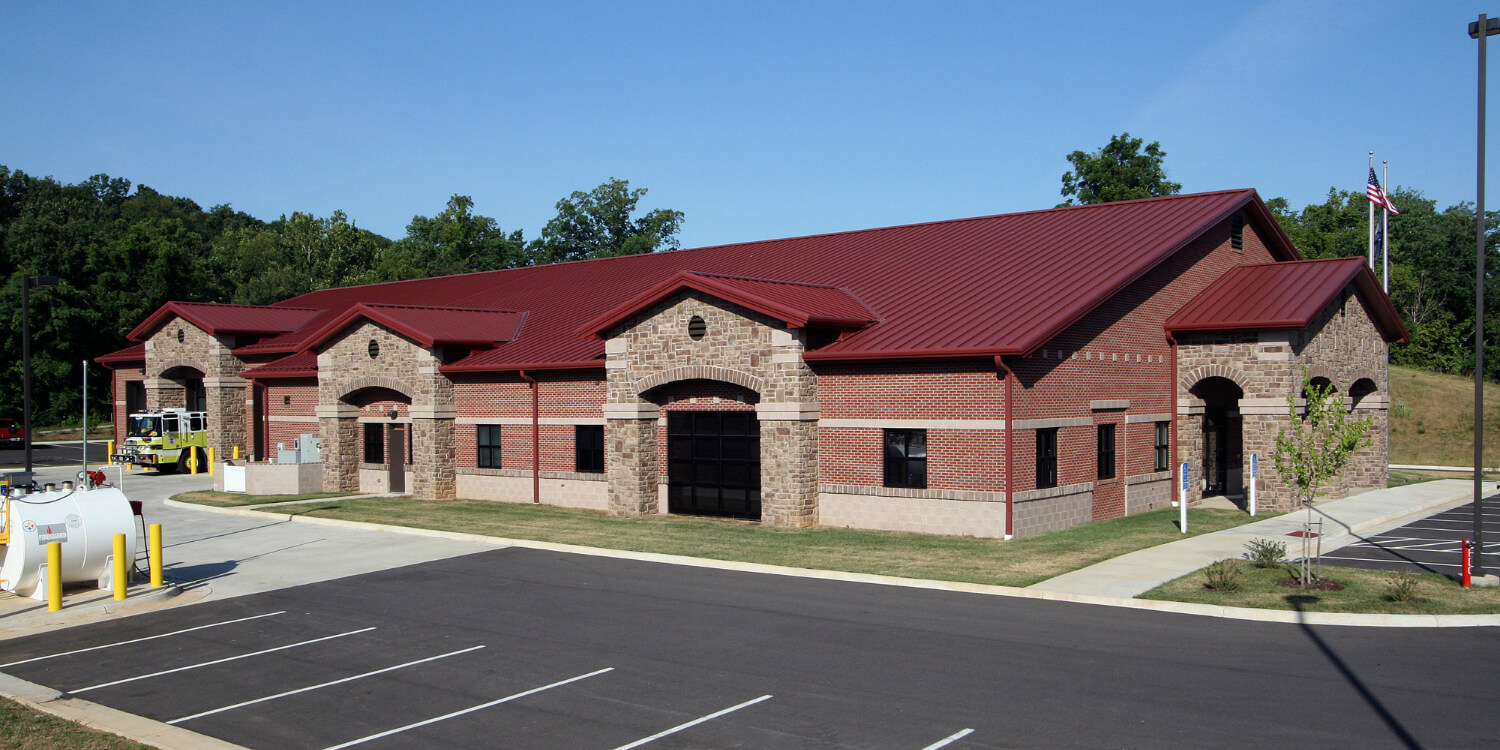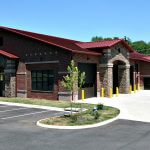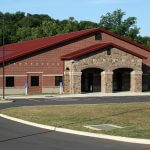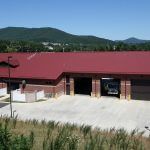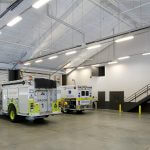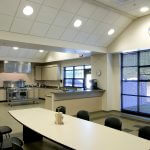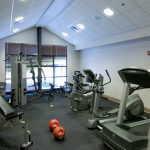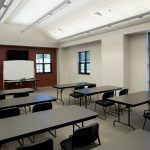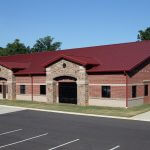Roanoke County Fire Station
Roanoke County, VA


This new, one-story fire station was the first in Roanoke County, Virginia since the 1970s. The station includes three double-loaded drive-through apparatus bays, decontamination and tool maintenance facilities and training areas on two levels. The residential quarters for 12 firefighters (plus officers) include a common bunkroom, private baths, a fitness training room, a dayroom, a dining room and kitchen, and a laundry room. Business spaces include offices for a captain, battalion chief and EMS officers, a conference / training room, a public lobby and public toilets.
Exterior finishes consist of a brick and stone veneer and metal roofs echoing the façade of the adjacent Harshbarger House, a historic home built in 1804. Smaller scale stone bays with arched openings help reduce the scale of the building and blend it with its historic and natural context.
Most of the 9.7 acre site has been left undeveloped with stands of deciduous and evergreen trees dotting a rocky hillside. A new screen of plantings helps provide a line-of-site barrier between the building and its neighbors. Stewart-Cooper-Newell Architects served as a consultant to local firm Hughes Associates Architects.
Programming and Schematic Design Public Safety Consulting Architect
Prev
Next
16,470 SF
This new, one-story fire station was the first in Roanoke County, Virginia since the 1970s. The station includes three double-loaded drive-through apparatus bays, decontamination and tool maintenance facilities and training areas on two levels. The residential quarters for 12 firefighters (plus officers) include a common bunkroom, private baths, a fitness training room, a dayroom, a dining room and kitchen, and a laundry room. Business spaces include offices for a captain, battalion chief and EMS officers, a conference / training room, a public lobby and public toilets.
Exterior finishes consist of a brick and stone veneer and metal roofs echoing the façade of the adjacent Harshbarger House, a historic home built in 1804. Smaller scale stone bays with arched openings help reduce the scale of the building and blend it with its historic and natural context.
Most of the 9.7 acre site has been left undeveloped with stands of deciduous and evergreen trees dotting a rocky hillside. A new screen of plantings helps provide a line-of-site barrier between the building and its neighbors. Stewart-Cooper-Newell Architects served as a consultant to local firm Hughes Associates Architects.
Programming and Schematic Design Public Safety Consulting Architect

